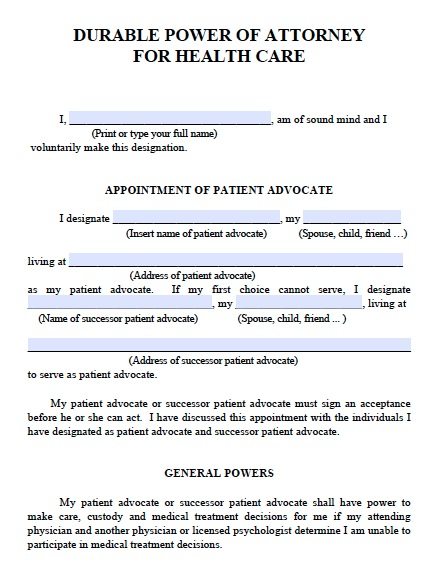The sickest 5% of the population create 50% of overall health care costs, while the healthiest 50% only create 3% of expenses. Individuals have less financial reward to remain healthy: Without a copay, people might overuse emergency clinic and medical professionals. There are long wait times for optional treatments: The federal government concentrates on providing basic and emergency health care.
Healthcare expenses. For instance, some Canadian provinces spend almost 40% of their budget plans on healthcare. with a low likelihood of success. This includes drugs for rare conditions and costly end-of-life care. In the United States, take care of clients in the last six years of life comprises one-fourth of the Medicare https://castbox.fm/episode/Finding-Addiction-Treatment-in-Boynton-Beach-Florida-id2801530-id255484139 budget plan.
Standardizes service. Develops a much healthier workforce. Avoids future social expenses. Guides individuals to make much healthier options. Downsides Healthy individuals pay for the sickest. Individuals have less financial incentive to remain healthy. Long wait times. Medical professionals might cut care to reduce costs. Health care costs overwhelm government budgets. The government may limit services that have a low probability of success There are three universal health care models.
Countries typically combine universal health protection with other systems to introduce competitors. These choices can decrease expenses, expand option, or improve care. Citizens can also select better services with supplemental private insurance coverage. The United States uses various designs for populations such as the elderly, veterans, and low-income individuals. In a single-payer system, the federal government provides totally free health care spent for with income from earnings taxes.
Every resident has the exact same access to care. This is called the Beveridge Model. When federal governments supply health care, they work to guarantee physicians and hospitals provide quality care at an affordable expense. They must collect and examine data. They can also utilize their acquiring power to influence health care service providers.
The Ultimate Guide To What Country Spends The Most On Health Care?
Other countries consist of Spain, New Zealand, and Cuba. The United States provides it to veterans and military workers with the Department of Veterans Affairs and the militaries. Nations that use a social medical insurance design needs everybody to purchase insurance, usually through their employers. The taxes go into a government-run health insurance fund that covers everybody.
The federal government controls health insurance rates. It likewise has a great deal of influence to manage the private-providers' rates. Germany developed this system. France, Belgium, the Netherlands, Japan and Switzerland likewise utilize it. The U.S. Obamacare system likewise needs insurance coverage, but there are numerous exemptions. It is also similar because it supplies subsidies to health insurance companies for low-income enrollees.
Every person pays into the national insurance coverage strategy. Administrative costs are lower since there is one insurer. The government has a great deal of utilize to force medical costs down. Canada, Taiwan, and South Korea utilize this model. The U.S. Medicare, Medicaid, and TRICARE systems likewise use this design Australia has a mixed health insurance.
Everyone gets protection. Individuals must pay deductibles before government payments start. Many residents want to spend for additional personal medical insurance to receive a greater quality of care. Federal government policies safeguard senior citizens, the bad, children, and rural residents. In 2018, healthcare cost 9. 3% of Australia's gross domestic item.
The per capita cost was US$ 5,005, about average for industrialized countries. There were 42. 6% of clients who reported a wait time of more than four weeks to see a specialist. Australia had among the best baby mortality rates of the compared nations at 3. 1%. Canada has a nationwide medical insurance system.
Rumored Buzz on What Is Primary Health Care
Private supplemental insurance spends for vision, oral care, and prescription drugs. Hospitals are openly funded. They offer totally free care to all residents no matter their capability to pay. The federal government keeps hospitals on a fixed budget plan to control expenses, however reimburses medical professionals at a fee-for-service rate. In 2018, health care expense 10.
The expense per individual was US$ 4,974. A whopping 62. 8% of patients waited more than 4 weeks to see a professional. The baby mortality rate was 4. 3%, among the nations compared. France has a social health insurance coverage system that supplies care to all legal residents. That includes healthcare facilities, doctors, drugs, and some dental and vision care.
Of that, payroll taxes fund 64%, income taxes spend for 16%, and 12% is from tobacco and alcohol taxes. In 2018, health care cost 11. 2% of GDP. That was US$ 4,965 per person. Half of all clients reported a wait time of more than 4 weeks to see a professional.

4%. These data are all in the middle of the pack for industrialized nations - which of the following is true about health care in texas?. Germany has a social health insurance program. Everybody should have public health insurance, but those above a certain income can select personal insurance coverage rather. The state-sponsored insurance coverage covers hospitalization, except for meals and lodging. It likewise covers rehab for medical facility stays, psychological health, and addiction.
Financing originates from payroll taxes. In 2018, healthcare cost 11. 2% of GDP. It averaged US$ 5,986 per person. Both figures have to do with average. Only 28. 1% of clients reported a wait time of more than 4 weeks to see a professional. That is among the lowest of the developed nations.
An Unbiased View of What Is Required In The Florida Employee Health Care Access Act?
The infant death rate was 3. 1%. The nation has a social health insurance coverage system for all locals. how many countries have universal health care. Coverage is provided by competing personal insurer. Citizens pay premiums approximately 8% of their income. The federal government reimburses them for any higher expenses. People can buy additional insurance to access much better healthcare facilities, medical professionals, and amenities.
2% of GDP. It was USD $7,317 per individual. Just 27. 3% of clients reported a wait time of more than 4 weeks to see a professional. The infant mortality rate was 3. 7%. The United Kingdom has single-payer healthcare that covers all citizens. Visitors receive care for emergency situations and transmittable diseases.
The government pays 80% of expenses through earnings and payroll taxes. The rest is paid from copayments and individuals paying out-of-pocket for NHS services. It pays for all medical care, consisting of some dental and eye care, hospice care, and some long-lasting care. https://player.fm/series/addiction-is-a-disease-transformations-treatment-center/finding-addiction-treatment-near-hallandale-florida There are some copays for drugs. In 2015, 10.
homeowners had private insurance coverage for elective medical procedures. In 2018, health care expenses were 9. 8% of GDP. The cost was US $4,069 per person. But 46. 4% of patients reported a wait time of more than four weeks to see an expert. The baby mortality rate was 3. 6%.
As a result, 67. 2% of Americans have personal health insurance coverage, mostly from their companies. The government subsidizes private health insurance through Obamacare. Another 37. 7% of Americans have federal government protection. These consist of Medicaid, Medicare, Children's Health Insurance coverage Program, and military protection consisting of the Veterans Administration. Just 8. 5% had no coverage at all.
Top Guidelines Of Who Is Eligible For Care Within The Veterans Health Administration?
Numerous democratic prospects promote universal health care under the title "Medicare for All." In 2018, healthcare expense 16. 9% of GDP. That was an incredible US$ 10,586 per person. About 28% of patients reported a wait time of more than 4 weeks to see an expert. That's about the exact same as Germany and Switzerland.
